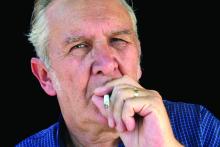according to a poster presented at the annual meeting of the American College of Cardiology.
“Inpatient smoking cessation therapy coupled with outpatient follow-up can significantly improve long-term smoking cessation rates, but little is known about how often smoking cessation therapies are used among hospitalized patients,” wrote Dr Quinn R. Pack and coauthors from the Baystate Medical Center in Springfield, and Massachusetts General Hospital.
Researchers analyzed billing data and ICD-9 codes for 36,675 current smokers hospitalized for MI at 282 hospitals in 2014, and found that overall only 29.9% of these individuals were given at least one kind of smoking cessation therapy, such as varenicline, bupropion, and nicotine replacement gums, patches, lozenges, and inhalers.The nicotine patch was the most common therapy; 20.4% of patients received it with an average daily dose of 19.8 mg, while 2.2% of patients received bupropion, 0.4% received varenicline, 0.3% received nicotine gum, 0.2% received nicotine inhaler therapy, and just 0.04% received nicotine lozenge therapy. Nearly one in ten patients received professional counseling (9.6%).
Smoking cessation was more commonly given to patients with lung disease, depression, alcohol use or who were younger but the researchers noted significant variations in the use of smoking cessation therapies across hospitals. While the median treatment rate was 26.2%, it ranged from as low as 11.4% to a high of 51.1%.
Given the variation across hospitals, the authors said they plan to identify the strategies and practices that the high-performing hospitals use to provide smoking cessation therapies.
“Smoking cessation is the single most effective behavior change that patients can make after a hospitalization for coronary heart disease to prevent recurrent events,” the authors wrote. “Given that hospitalization is usually a teachable moment with high patient motivation to quit smoking, there appears to be a large opportunity for improvement in the care of smokers hospitalized with CHD.”
The authors noted that their data were limited to smoking cessation options provided during hospitalization; the researchers said they did not assess whether those therapies helped MI patients quit smoking, or whether there were patients who declined the therapies offered.
No conflict of interest disclosures were provided with the data.


